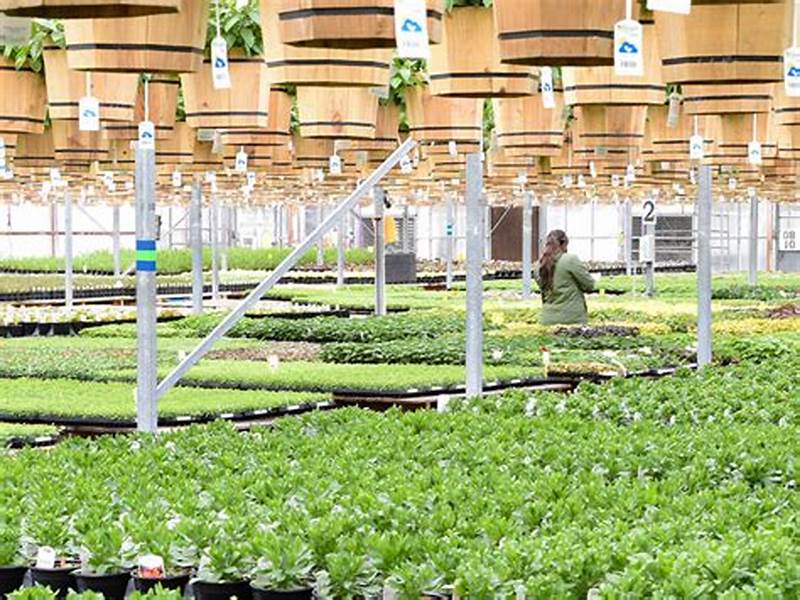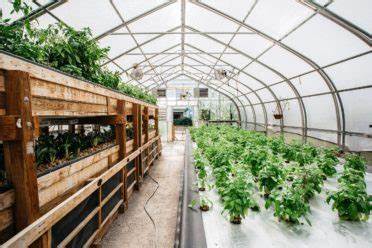
Vertical Farms: A Sustainable Solution for Climate Change Adaptation
Introduction
Vertical farming is an innovative agricultural practice that has gained significant attention for its potential in climate change adaptation. By utilizing vertical space and advanced technologies, vertical farms offer a sustainable solution to address the challenges posed by climate change. This article explores the historical background, key concepts, main discussion points, case studies, current trends, challenges, and future outlook of vertical farms in climate change adaptation.
Definition of Vertical Farms and Climate Change Adaptation
Vertical farms are indoor farming systems that use vertically stacked layers to grow crops in a controlled environment. They aim to maximize production efficiency, reduce resource consumption, and mitigate the negative impacts of climate change. Climate change adaptation refers to the strategies and actions taken to adjust and respond to the current and anticipated impacts of climate change.
Origins and Evolution of Vertical Farms
The concept of vertical farming dates back to the early 20th century, with the development of vertical hydroponic systems. However, it wasn’t until the 21st century that vertical farms gained prominence with the integration of advanced technologies such as LED lighting, hydroponics, and aeroponics. Historical examples, such as the Vertical Farming Project in Columbia, showcase the early attempts to address food security and environmental sustainability through vertical farming practices.
Key Concepts and Definitions
Vertical Farming: Definition and Principles
Vertical farming involves the cultivation of crops in vertically stacked layers using soilless methods. This approach maximizes space utilization, minimizes water and nutrient consumption, and reduces reliance on traditional agricultural practices. The principles of vertical farming include efficient resource management, year-round crop production, and protection against climate-related risks.
Climate Change Adaptation: Understanding the Concept
Climate change adaptation refers to the strategies and measures implemented to reduce the vulnerability of ecosystems, communities, and economies to climate change impacts. In the context of vertical farms, climate change adaptation involves utilizing the technology and practices to ensure food security, environmental sustainability, and resilience in the face of changing climatic conditions.

Integration of Vertical Farms in Climate Change Adaptation Strategies
Vertical farms play a crucial role in climate change adaptation strategies by offering sustainable alternatives to conventional farming practices. The integration of vertical farms in urban planning, food security initiatives, and disaster management frameworks enhances climate resilience and fosters sustainable development.
Main Discussion Points
Point: Vertical Farms as a Sustainable Solution
Explanation of Vertical Farming’s Environmental Benefits
Vertical farming significantly reduces the environmental footprint of agriculture by minimizing land use, water consumption, and pesticide usage. The controlled environment in vertical farms also eliminates the need for harmful chemicals, ensuring the production of safe and nutritious crops.
Reduction of Land and Water Usage
Vertical farming utilizes vertical space efficiently, allowing higher crop yields per unit area compared to traditional farming. Moreover, vertical farms employ techniques such as hydroponics, which use significantly less water compared to conventional irrigation methods.
Mitigation of Carbon Emissions
By reducing the distance between production and consumption, vertical farms minimize transportation-related carbon emissions. Additionally, the integration of renewable energy sources in vertical farming systems further reduces greenhouse gas emissions.
Point: Increased Food Security through Vertical Farms
Vertical Farms’ Potential to Address Food Shortages
Vertical farms offer a promising solution to the global food crisis by providing a localized, reliable, and year-round supply of fresh produce. The ability to grow crops in urban areas reduces the dependency on distant agricultural regions and minimizes the risks associated with climate-induced crop failures.
Year-Round Crop Production and Reduced Dependency on Seasonal Variations
Vertical farms enable the cultivation of crops in controlled environments, eliminating the reliance on seasonal variations. This consistent production throughout the year ensures a stable food supply, even during extreme weather events or natural disasters.
Localized Food Production and Reduced Food Miles
By establishing vertical farms in urban centers, food production is brought closer to the consumers, reducing the distance traveled by food products. This not only decreases the carbon footprint associated with transportation but also enhances food security by minimizing supply chain disruptions.

Point: Vertical Farms as Climate Change Resilient Infrastructure
Resistance to Extreme Weather Events
Vertical farms are designed to withstand extreme weather conditions, such as hurricanes, floods, and heatwaves. The controlled environment and indoor cultivation methods protect crops from external factors, ensuring continuous production and minimizing the risks of crop loss.
Protection against Crop Loss and Natural Disasters
Vertical farms offer a secure and protected environment for crop growth, shielding plants from pests, diseases, and natural disasters. This resilience helps to maintain a stable food supply, even in the face of climate-related challenges.
Adaptability to Changing Climate Conditions
Vertical farms have the flexibility to adapt to changing climate conditions by adjusting the environmental parameters within the growing environment. This adaptability ensures optimal crop growth and enables farmers to mitigate the impacts of climate change on agricultural production.
Case Studies or Examples
Example: The Plant Chicago Vertical Farm
Overview of The Plant Chicago’s Sustainable Vertical Farming Practices
The Plant Chicago is an exemplary vertical farm that utilizes aquaponics, a system that combines fish farming and hydroponic crop production. By recycling waste from fish as nutrients for plants, The Plant Chicago demonstrates a closed-loop system, reducing waste and maximizing resource efficiency.
Positive Impacts on Climate Change Adaptation
The Plant Chicago’s vertical farm contributes to climate change adaptation by reducing water consumption, minimizing carbon emissions, and providing locally sourced fresh produce to the community. This case study showcases the practical application of vertical farming principles in a real-world setting.
Example: The Sky Greens Vertical Farm in Singapore
Description of the Sky Greens Vertical Farming System
The Sky Greens vertical farm in Singapore utilizes a rotating tower system, enabling high-density crop production. This innovative approach maximizes space utilization in urban areas, where land availability is limited.
Contributions to Climate Change Adaptation in Urban Environments
The Sky Greens vertical farm plays a significant role in climate change adaptation by reducing the reliance on imported food, minimizing the carbon footprint of food production, and creating a localized supply chain. This case study highlights the potential of vertical farms in urban environments to enhance food security and environmental sustainability.
Current Trends or Developments
Technological Advances in Vertical Farming Systems
Continuous advancements in LED lighting, automation, robotics, and data analytics have revolutionized vertical farming practices. These technological innovations enhance productivity, reduce resource consumption, and improve overall efficiency, enabling vertical farms to adapt to evolving climate conditions.
Integration of Vertical Farms into Urban Planning Strategies
Urban planners are recognizing the potential of vertical farms as a sustainable solution for the future. By integrating vertical farms into urban planning strategies, cities can ensure food security, optimize land use, and create resilient communities in the face of climate change.

Research Findings on Vertical Farming’s Impact on Climate Change Adaptation
Numerous research studies have demonstrated the positive impact of vertical farming on climate change adaptation. These findings highlight the potential of vertical farms to reduce the carbon footprint of agriculture, enhance food security, and promote environmental sustainability.
Challenges or Controversies
High Initial Costs and Capital Investment
One of the main challenges associated with vertical farming is the high initial costs and capital investment required to establish and operate vertical farms. However, as technology advances and economies of scale are realized, the costs are expected to decrease, making vertical farming more accessible.
Energy Consumption and Carbon Footprint of Vertical Farms
Vertical farms rely heavily on artificial lighting and climate control systems, resulting in increased energy consumption. However, the integration of renewable energy sources, energy-efficient technologies, and optimization of operational practices can help mitigate these concerns.
Potential for Limited Crop Variety and Nutritional Diversity
Vertical farms are primarily focused on high-value crops and leafy greens due to their fast growth and high demand. This specialization may limit the diversity of crops available and the nutritional variety provided by traditional farming methods. However, ongoing research and development aim to expand the range of crops suitable for vertical farming.
Future Outlook
Potential Expansion and Integration of Vertical Farms in Climate Change Adaptation Initiatives
The utilization of vertical farms is expected to expand significantly in the coming years as the world faces increasing challenges related to climate change and food security. Vertical farms have the potential to become an integral part of climate change adaptation initiatives, providing sustainable and resilient food systems.
Advancements in Vertical Farming Technologies and Practices
The continuous advancements in vertical farming technologies and practices will drive the evolution of this agricultural sector. Improved efficiency, automation, and optimization will further enhance resource management, increase crop yields, and ensure the long-term viability of vertical farms.
Conclusion
In conclusion, vertical farms offer a sustainable solution for climate change adaptation through their environmental benefits, increased food security, and climate resilience. By integrating vertical farms into urban landscapes and utilizing advanced technologies, we can address the challenges posed by climate change while ensuring a reliable and sustainable food supply for future generations.




